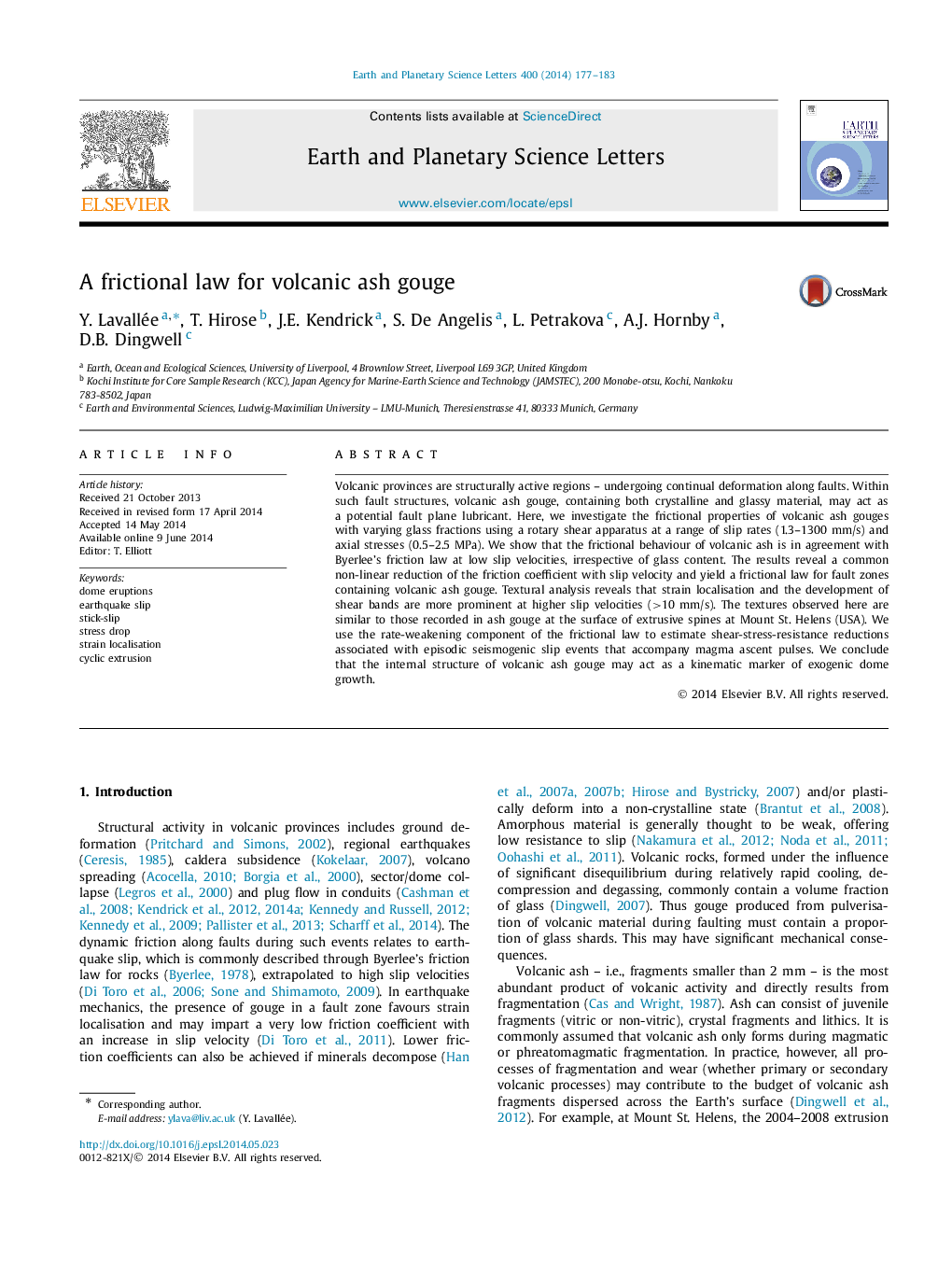| Article ID | Journal | Published Year | Pages | File Type |
|---|---|---|---|---|
| 6428770 | Earth and Planetary Science Letters | 2014 | 7 Pages |
â¢A frictional law describes the rate-weakening behaviour of volcanic ash gouge.â¢The rate-weakening behaviour is intransigent to the glass shard fraction.â¢The degree of strain localisation is a marker of fault zone's slip rate.â¢The mechanical behaviour copies the seismic stress drops during spine extrusion.
Volcanic provinces are structurally active regions - undergoing continual deformation along faults. Within such fault structures, volcanic ash gouge, containing both crystalline and glassy material, may act as a potential fault plane lubricant. Here, we investigate the frictional properties of volcanic ash gouges with varying glass fractions using a rotary shear apparatus at a range of slip rates (1.3-1300 mm/s) and axial stresses (0.5-2.5 MPa). We show that the frictional behaviour of volcanic ash is in agreement with Byerlee's friction law at low slip velocities, irrespective of glass content. The results reveal a common non-linear reduction of the friction coefficient with slip velocity and yield a frictional law for fault zones containing volcanic ash gouge. Textural analysis reveals that strain localisation and the development of shear bands are more prominent at higher slip velocities (>10 mm/s). The textures observed here are similar to those recorded in ash gouge at the surface of extrusive spines at Mount St. Helens (USA). We use the rate-weakening component of the frictional law to estimate shear-stress-resistance reductions associated with episodic seismogenic slip events that accompany magma ascent pulses. We conclude that the internal structure of volcanic ash gouge may act as a kinematic marker of exogenic dome growth.
